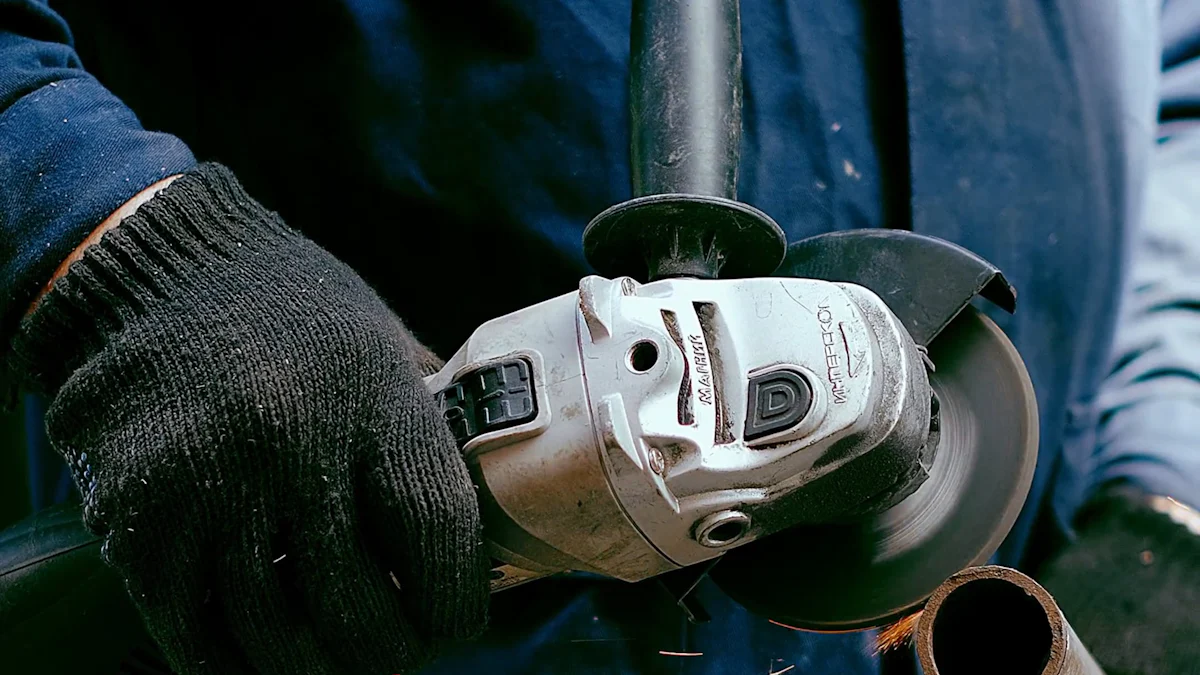 Discover the angle grinder spanner wrenches, vital tools for DIY enthusiasts. These tools play a crucial role in securely tightening or loosening lock nuts on angle grinders. Throughout this blog, we will delve into the significance of these wrenches, explore their various types and uses, and provide essential safety tips for handling them effectively. Let’s unlock the potential of angle grinder spanners in your DIY projects!
Discover the angle grinder spanner wrenches, vital tools for DIY enthusiasts. These tools play a crucial role in securely tightening or loosening lock nuts on angle grinders. Throughout this blog, we will delve into the significance of these wrenches, explore their various types and uses, and provide essential safety tips for handling them effectively. Let’s unlock the potential of angle grinder spanners in your DIY projects!
Understanding Angle Grinder Spanners
Angle grinder spanner is a specialized tool designed for a specific purpose. It serves as a key component in the maintenance and operation of angle grinders. The primary function of an angle grinder spanner is to securely fasten or release the lock nut that holds the grinding wheel or cutting blade in place. This ensures the safety and stability of the tool during operation.
When examining the common features of an angle grinder spanner, one can observe its sturdy construction and ergonomic design. These wrenches are typically made from durable materials such as hardened steel, providing strength and longevity. The handle of the spanner is often textured or rubberized to offer a comfortable grip for the user, enhancing control and precision while working with the angle grinder.
Utilizing an angle grinder spanner offers numerous benefits, particularly in terms of safety. By using the spanner to properly tighten the lock nut, users can prevent accidents caused by loose attachments during operation. This secure fastening also contributes to the overall efficiency of projects by ensuring that grinding wheels or blades remain stable and aligned, leading to precise and consistent results.
Types and Uses
Different Types of Angle Grinder Spanners
Angle grinder spanners come in various types to cater to different needs. Fixed size spanners are designed for specific lock nut sizes, ensuring a precise fit for secure fastening. On the other hand, adjustable spanners offer versatility by accommodating a range of lock nut sizes with their adaptable pins, making them suitable for various angle grinder models.
Specific Uses in DIY Projects
When engaging in DIY projects, angle grinder spanners play a crucial role in ensuring the safety and efficiency of your work. By using these tools for tightening and loosening lock nuts, you can securely attach grinding wheels or cutting blades to your angle grinder, preventing any accidents due to loose attachments. Moreover, the compatibility of angle grinder spanners with various brands allows you to work seamlessly with different angle grinder models, enhancing the flexibility and convenience of your projects.
Safety Tips and Maintenance
Proper Usage Techniques
To ensure a secure fit when using an angle grinder spanner, position the wrench correctly on the lock nut. Apply firm pressure while turning the spanner to tighten or loosen the nut effectively. Remember to always use the appropriate size of angle grinder spanner for your specific grinder model to avoid slippage or damage.
Avoiding Common Mistakes
When handling an angle grinder spanner, be cautious not to force the tool onto the lock nut, as this can lead to stripped threads or misalignment. Additionally, refrain from over-tightening the nut, which may cause unnecessary strain on the angle grinder components. Regularly inspect the spanner for any signs of wear or damage and replace it if needed.
Maintenance and Storage
After each use, clean your angle grinder spanner with a dry cloth to remove any debris or residue. Inspect the wrench for any wear and tear, such as bent pins or worn-out edges, and address these issues promptly. Store your spanner in a dry and secure location, away from moisture and direct sunlight, to maintain its durability and functionality.
- To summarize, mastering angle grinder spanner wrenches is key for safe and efficient DIY projects.
- Understanding the importance of these tools ensures precise results and prevents accidents.
- I encourage you to implement your newfound knowledge in your upcoming projects.
